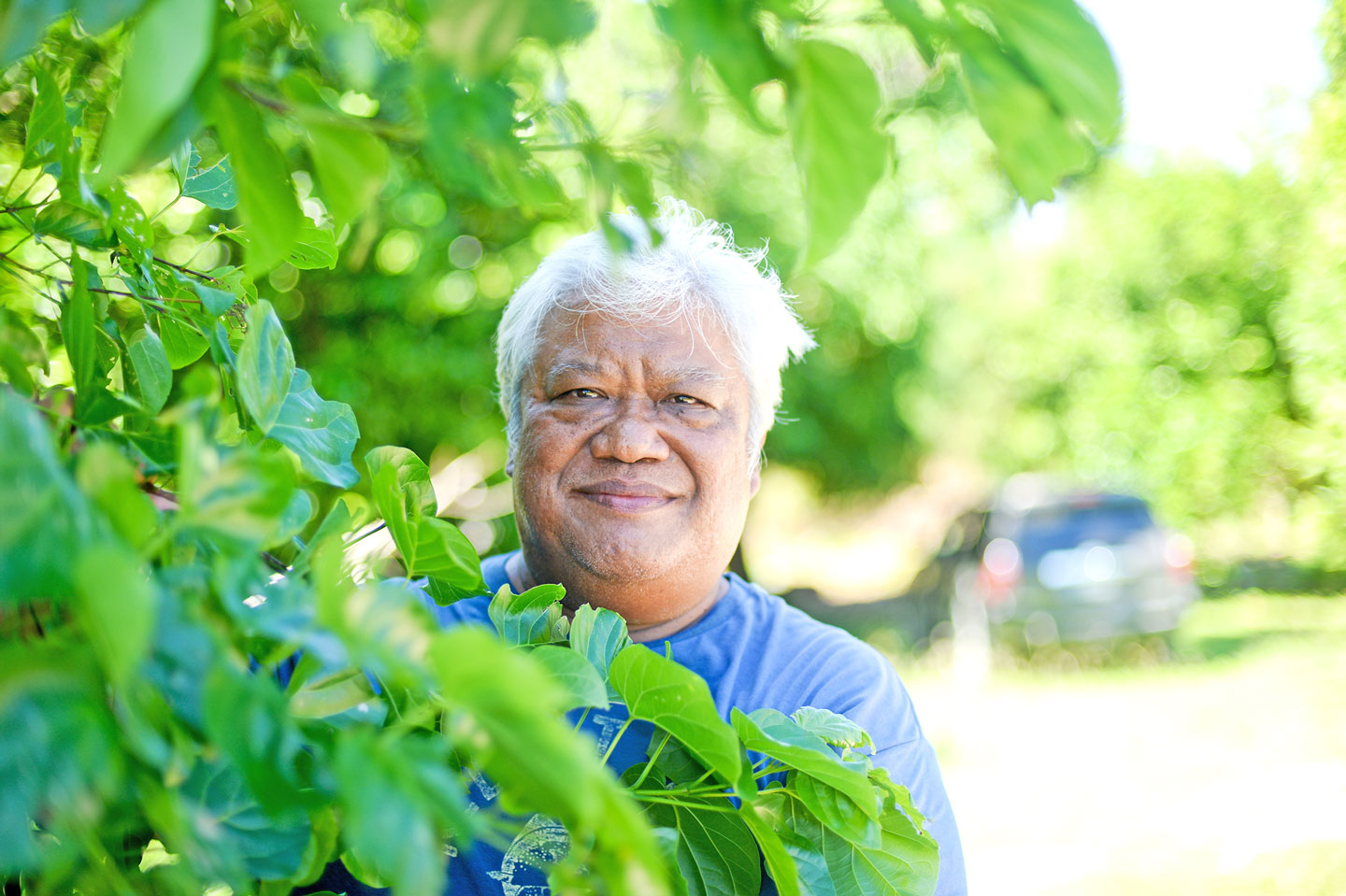Yeh-Yeh: Donald Mendiola: Healing with herbs, spirits, positivity

Donald Mendiola is a traditional healer on Saipan who practices ancient Chamorro medicine in modern times. (Lindsay Nash)
The Yeh-Yeh series shares rich stories and oral traditions of Saipan. The name is inspired by Refaluwasch elder Lino Olapai’s childhood memory of being told to say “yehyeh” as the elders told stories. Once it was quiet, the elders knew the children were asleep.
In a world––and year––that can seem dark, Saipan suruhånu Donald Mendiola always sees the light.
Call him what you will: a traditional healer, a medicine man, an herbalist, a keeper of culture, a teacher. But if you ask him, he’s always had one mission––to help others.
“I am an instrument of God,” Mendiola says, sitting outside his home under a covered wraparound veranda.
It is a peaceful spot in southern Saipan where chickens crow nearby. Stalks of sugar cane grow tall behind the house. A set of picnic tables line the veranda, a place that attracts a steady stream of people who come for treatment. Plants surround the house and dot the surrounding land. Tumaga. Soursop. Pomegranate. Sugar cane. Yellow ginger. Each with its own healing power.
At 57, Mendiola is an expert in traditional medicine and spiritual healing. He is one of only a few remaining suruhånu on Saipan who practices the ancient Chamorro tradition of using herbs and spiritual healing to cure everything from aches and pains to broken bones to ailments attributed to the taotaomo’na, ancestor spirits believed to cause physical maladies.
But Mendiola goes beyond the rituals to take his own approach to healing. He’s not afraid to collect the plants he needs exactly when he needs them, rather than early morning hours or before sunset, like he was taught. And he bucks the tradition of keeping his medicinal recipes a secret. It is his duty, he believes, to pass forward his knowledge.
“If you give a man a fish, you feed him for a day. If you teach a man to fish, you feed him for a lifetime,” Mendiola says, quoting the proverb.
Mendiola has always been drawn to healing, even as a very young boy. And like many traditional Chamorro healers, he was trained by a family member who sensed he has an affinity for the craft.
His grandmother was a well-known suruhåna and Mendiola was fascinated with her ability to pluck herbs from her garden, pound them up, and boil them into medicine that could heal others in the community.
“I went to my grandmother and said, “Nana, I want to learn what you know about medicine. Can you teach me?”
He began going to her house every day. He was a bright child with a photographic memory and it was easy for him to memorize each recipe. He was soon a full-fledged healer. “Even the man’amko would say, ‘You’re so young––not even 12 and you know more recipes for healing than us!’”
Mendiola laughs as he thinks about his youth. He preferred playing bingo with the elders rather than playing with kids his own age. And as more of the man’amko saw his talent, the more of their own medicinal recipes they would share.
“Families would come and see me and share what they knew,” Mendiola said. “Most were Chamorro, but I was also learning from Palauan, Chuukese and other elders across Micronesia.”
Mendiola quickly excelled past the traditional herbal healing and moved into spiritual healing, which he considers his true calling.
“I started learning on my own through meditation. I went to the cliffs, the beaches––even at night. I would sit there and talk to the spirits. Sometimes I’d go to the cemetery and talk to the spirits. I’d ask, ‘Is there something I should know to help others? Can you communicate it back to me?’ And something would come into my mind. Right there.”
Mendiola can tell you many stories of miraculous healing, like the times he was summoned to the hospital emergency room to eradicate a demon spirit trapped in someone’s body, occasions where he healed a patient with the doctor and staff standing by as witnesses.
But he is not prideful, he says. Mendiola is quick to explain that while he has been given the supernatural power to heal people, it is only through God that it can be done. “It must be done from the heart,” he said. “You have to love to do it and have a commitment to doing charity.”
Despite the difficult year, the pandemic, and the local austerity measures that have affected him, Mendiola remains a beacon of positivity amidst the world around him.
“I believe that whatever is inside will manifest on the exterior and whatever is happening outside is a reflection of what you’re carrying in your inner universe,” Mendiola said.
“We need to think of others instead of ourselves,” he said. “Stop thinking of me, me, me. Change it to us, us, us. Because we are all connected.”
Lindsay Nash (Special to the Saipan Tribune)
Lindsay Nash is a writer and photographer who lives on Saipan. She is a member of the Marianas Writers’ Movement and is currently writing a novel about 20th century Saipan. Email her at lindsayinsaipan@gmail.com.























